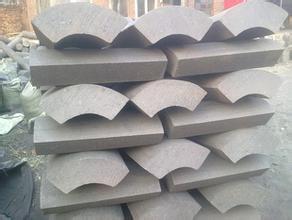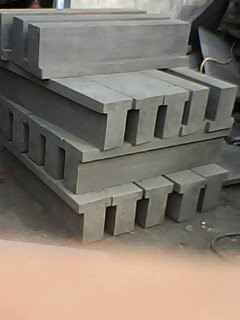Graphite products are mainly used in aviation, aerospace, bio-energy, medical and health and other fields. It is one of the main materials in battery polymer materials. Compared with ordinary lithium batteries, the energy density increases the safety performance of the battery, and its stacked structure can absorb more energy. Greater energy density offers the best prospects for electric vehicles.
The future is bright. Graphite is now used in many new energy vehicle batteries, and domestic and foreign giants are also investing in graphite batteries. The country and the government have a guiding plan for the development and sales of all vehicle batteries for new energy vehicles. If graphite Batteries can become the mainstream, then my country's lithium battery technology will achieve great development

You can understand lithium as a lithium battery, and a lithium battery mixed with lithium.
carbon battery equivalent material. The choice of carbon equivalent directly determines the capacity of your battery. Because he is a molecule with a strong force, he, like other substances, provides enough space for the spatial arrangement at the molecular level. This also involves many scientific methods such as structure science. Graphene, as a multifaceted material, has a positive effect on batteries, but there is still a long way to go before switching from a single electrode material to a ternary material. For now, the development space occupied by ternary materials is going to be the largest in the world together with us.

lithium battery (slm). For example, for ternary materials, graphene is not directly doped, but graphene is used to cover the positive and negative electrodes between the lattices. The multilayer superimposed structure provides enough space to embed the metal oxide electrode upside down. In the middle of the positive and negative poles. In this way, lithium batteries can provide greater volume and weight. At the same time, graphene can inhibit the growth of a single hydrogen nucleus and prevent the generation of excessive growth. It is even possible to grow new graphene using the oxygen released by carbon-based batteries.
Now companies in Europe, America, Japan and South Korea are using a large number of graphene to develop and apply lithium batteries. Carbon can also be used for research on carrier diffusion coupling and photocatalysis. Therefore, if battery technology can be used to truly solve the electrolyte problem and have superior performance, there should be a better room for development. However, there is not much room for development. Timing issue. For battery production alone, if the difficulty of production is not considered, it is also necessary to divide the public modules, mold opening, grinding tools, and the production cost of mold opening lies there.

The mass focus on the performance of graphene batteries is undoubtedly a distraction. In addition, judging from the current graphene research, materials with a sufficiently low cost can already be processed, and the immature production process (difficulty in mold opening) has become a problem for all enterprises. Strictly speaking, pure graphene cannot be used as a lithium battery. Moreover, the large-scale production of graphene has led to high cost increases and reduced industrial demand. A large part of graphene is used as an electrode. In this way, the overall profit is reduced, and if graphene is used to make finished products, only the cost of carbon-based materials cannot be used to make graphene batteries.
Therefore, it is difficult for graphene batteries to become the mainstream of battery manufacturing. Therefore, there is no national development strategy for lithium batteries in China. The same is true for purified water, bacteria exceeding the standard, and combustibles disposal. I think the current problems in our country are all within the controllable range. As for industrial issues, I think they are quite challenging.
